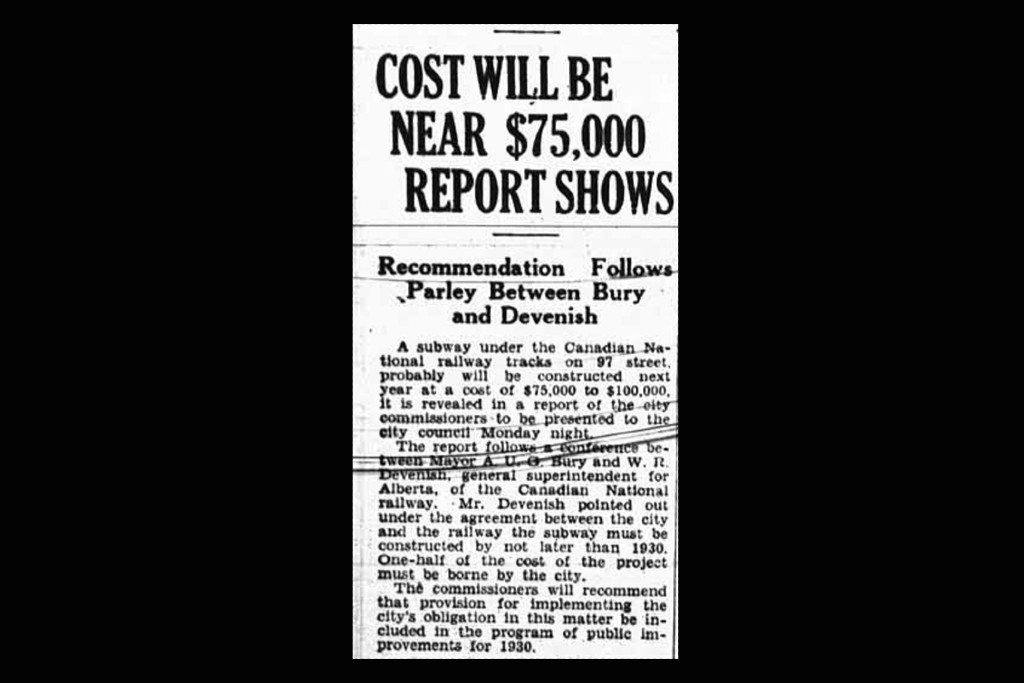On this day in 1929, city officials were discussing the costs of building the 97th Street Subway downtown.
The estimate came after a "parley" between Edmonton's mayor at the time, Ambrose Bury, and a representive from Canadian National Railway. The railroad's tracks crossed 97th Street, and an agreement stated that the city would have to pick up half the cost of between $75,000 and $100,000, which is about $1.1 million to $1.5 million in 2021 dollars.
When we think of the word "subway" now, it probably conjures up images of trains speeding through tunnels. But in 1929, citu officials used it to describe what we'd probably call an underpass today. The 97th Street Subway dipped underneath the railroad tracks before popping back up just north of downtown. At the time, the street was one of the main routes for the city's streetcar system and a busy roadway. When the subway was finished, it provided a safe route for the vehicles and pedestrians crossing the tracks in and out of downtown.
While the the tracks are no longer in use, the 97th Street Subway and its bridge are still an Edmonton landmark. It serves as a threshold between downtown and the northern section of Chinatown. In 2016, the unused bridge over the subway was turned into LIVINGbridge, an urban garden and gathering place, before being dismantled two-and-a-half years later.
The 97th Street Subway serves as a reminder of the challenges faced by many western Canadian cities built around the railroad. While serving as a vital link for trade, tourism and industry, they can also be a hurdle when it comes to traffic and pedestrians. It's still an issue in 2021; just last week, the City of Edmonton unveiled the design for a new overpass to cross the railroad tracks on 50th Street. The project is expected to begin next year.
This is based on a clipping found on Vintage Edmonton, a daily look at Edmonton's history from armchair archivist @revRecluse — follow @VintageEdmonton for daily ephemera via Twitter.

